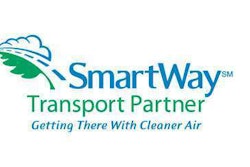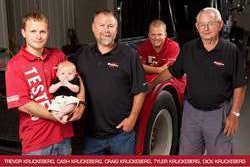Counterfeiting is illegal in the United States and Canada. It sounds so ridiculous to say that out loud, since it’s the kind of thing everyone knows, but it’s the truth. Both ethically and legally.
You can’t take a product or idea that belongs to someone else, copy it and sell it.
(Well, I guess you can, if you’re interested in burning $2 million and spending five years in prison.)
But apparently, that cut-and-dried, could-not-be-more-obvious rule isn’t as ubiquitous in the rest of the world as you or I might believe.
I was on the phone with HDMA President and CEO Tim Kraus last week when he mentioned that in other corners of the world — specifically China — counterfeiting isn’t viewed as an explicitly unethical action. In fact, in some Asian nations, Kraus says he’s learned counterfeiting is almost viewed as a challenge.
“They pride themselves on being able to copy our designs,” he says. “They don’t see anything wrong with it.”
Its quotes like that that make me shudder when thinking about the impact counterfeit parts could have on our heavy-duty trucks.
Can you imagine what would happen if a Class 8 truck and trailer weighing in at 75,000 lbs. was rolling down the highway with brakes made in a bamboo hut? Or with a S/T/T lamp built with components found around someone’s house?
It is not a pretty picture.
Here in the U.S., we’re lucky.
While Kraus says suppliers regularly voice their concerns about counterfeit parts trickling in to our industry from overseas, for the most part HDMA and its parent organization MEMA see very little of it.
“We work with [the U.S. Department of Commerce’s Immigrations and Customs Enforcement] and Homeland Security to make sure those types of products don’t end up here,” Kraus says.
He adds the Chinese and its largest domestic manufacturers have started investigating the issue as well. Despite its counterfeiting problem, Kraus says an overwhelming majority of cars and trucks on Chinese roadways are running OEM-quality parts.
Vehicle age is a major reason for that — “You rarely see anything older than three years old over there” — but adds that suppliers in the People’s Republic also have upped their interest in aftermarket manufacturing in recent years. Just like in North America, Kraus says China’s largest manufacturers — both those native to the country and the global players operating in the market — don’t want their customers taking a chance on country’s counterfeit alternative parts, either.
But even with an aftermarket it’s unlikely the Chinese counterfeiting industry would subside. The nation also is home to various online catalog houses that sell without any performance testing or supervision.
“You go to a [website] and buy a part and they send you to a location to pick it up,” says Kraus. “You show them your invoice for one brake shoe or whatever you are buying and they bring one to you … but there is no control as to what it is. It’s just a shoe.”
That business model becomes more problematic when shipping internationally.
The various methods found in China for counterfeiting are equally stomach turning.
With less corporate and governmental production rules in place, it is not uncommon to see Chinese factories intentionally overproduce parts in contract manufacturing scenarios, selling the excess as their own private brands. Products that fail quality tests also are commonly packaged and sold.
And when those products fail on Chinese roadways, the OEMs are held responsible, not the counterfeiters.
That’s what keeps MEMA and its North American customs partners so vigilant, says Kraus.
“We are concerned that those products could make their way into our market,” he says. “If a supplier or distributor acquires that product and takes it at face value that it is of equal quality to what we have here … that is an incredible risk.”











